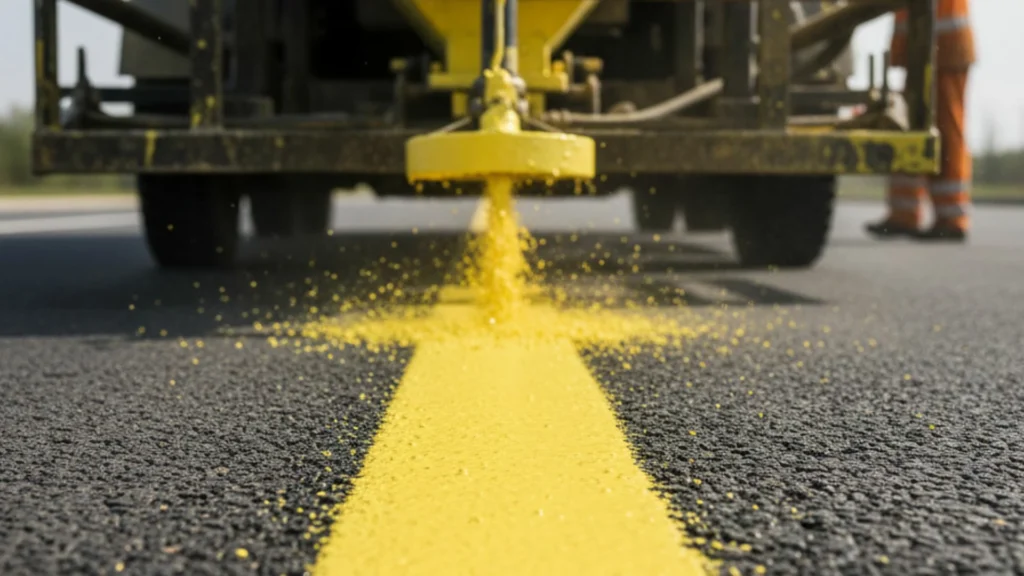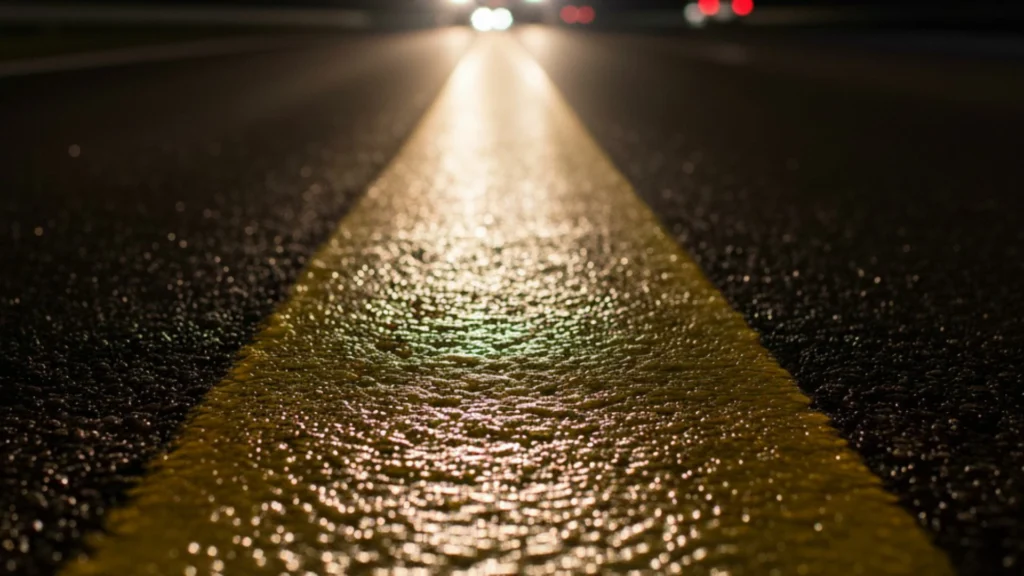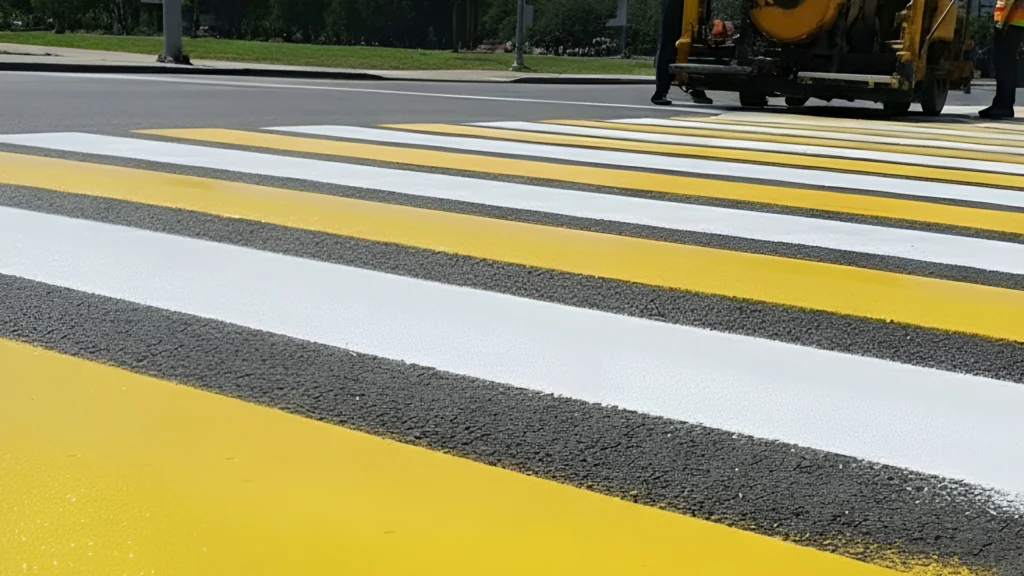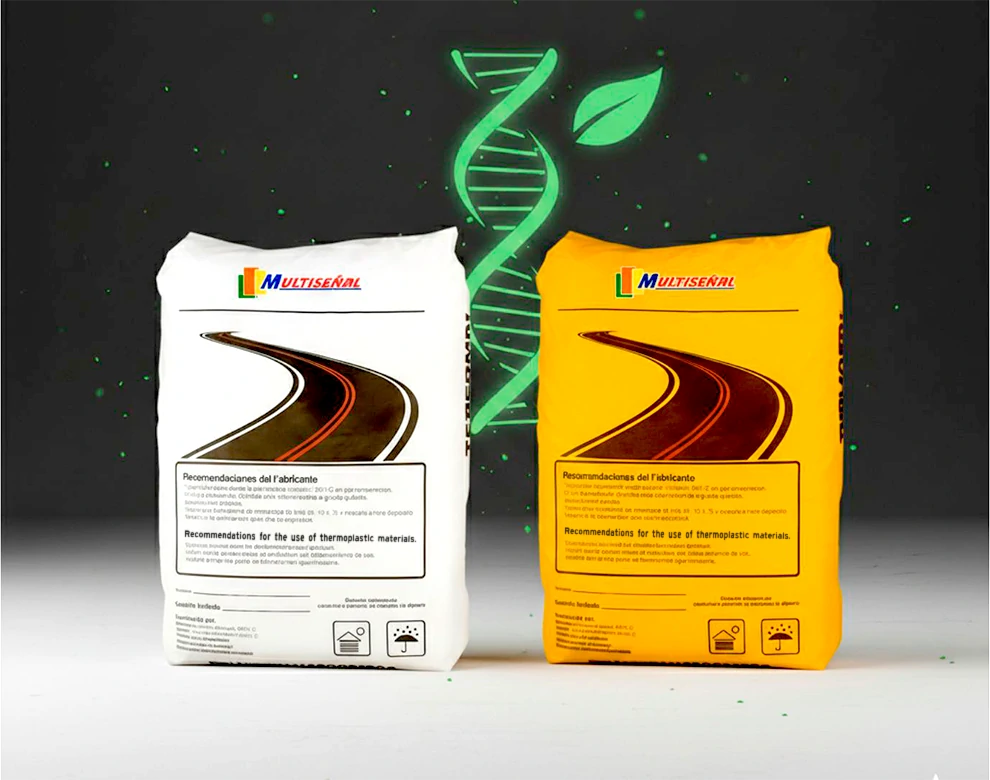When we drive, we take for granted that the streets are properly marked. The lines that define lanes, crosswalks, and directional arrows don’t just guide traffic—they can be the difference between arriving safely and facing an accident. That’s why thermoplastic paint has emerged as the trusted standard in road infrastructure projects across the globe.
Beyond its aesthetic role, road paint is essential for organizing traffic in cities and on highways. From highway paints to street paints, these solutions provide pedestrians and drivers with clear guidance, helping them navigate safely in both urban and rural environments.
Therefore, in this blog, we’ll explore what thermoplastic paint is, why it works so well, how it’s applied, and how it helps make our roads safer for everyone.

Understanding Thermoplastic Paint and Its Crucial Role in Road Safety
Thermoplastic paint is a horizontal road marking material applied hot, melting at temperatures between 356°F and 428°F. Unlike conventional solvent-based paints, it is thicker (between 0.06 in and 0.11 in), allowing it to withstand constant traffic without losing its properties.
The paint combines organic pigments, glass microspheres, high-quality resins, and calcium carbonate. Carefully formulated with advanced technology, it stands up to extreme heat, rain, and heavy traffic. Plus, it is environmentally friendly and free of heavy metals, making it a sustainable option for roads and infrastructure built to last.

Practical Advantages You Notice Every Day
What makes thermoplastic paint truly remarkables in how its advantages show up in the safety and comfort of every road user. It’s more than a technical specification; it’s something that makes a real difference in the lives of millions.
- Enhanced visibility day and night: Glass microspheres act as tiny reflectors, bouncing back headlights—a crucial feature for reducing nighttime accidents.
- Exceptional durability—Up to Eight Times Longer: Resistant to tire wear, sun exposure, and chemical solvents, it helps minimize the frequency of repainting.
- Reduced maintenance expenses: With fewer upkeep operations, cities can redirect their budgets toward other essential infrastructure projects.
- Eco-friendly design: The thermodegradable packaging fuses with the paint, eliminating extra plastic waste.
- Rapid road reopening: With a drying time of less than 10 minutes, it minimizes inconvenience for drivers and prevents prolonged traffic congestion.

Thermoplastic Paint in Action: City Streets and Highways
Thermoplastic paint is incredibly versatile, making it suitable for numerous situations. Common uses include
- Lane markings on roads, avenues, and highways.
- Crosswalks and school zones where visibility is key.
- Safety zones such as roundabout approaches or high-traffic areas.
- Directional arrows and road symbols that help manage traffic flow.
- Dedicated lanes for public transport or bike lanes.

Applying Thermoplastic Paint: Straight from the Bag to the Street
What sets thermoplastic paint apart is its distinctive application process. Supplied in 44 lb bags, the material can be fed directly into the melting kettle. Once heated, it is applied to the road surface using spray, extrusion, or profiling equipment, depending on the line style needed.
The process is quick and efficient, enabling rapid coverage of extensive surfaces. Plus, by bonding with the asphalt, it ensures superior adhesion and long-lasting durability.

Promoting Traffic Awareness and Environmental Responsibility
Every pavement marking is a gentle reminder for drivers and pedestrians to respect traffic order. With its long-lasting visibility, thermoplastic paint encourages safer behavior and helps lower the risk of accidents.
On the other hand, thermoplastic paint is made and packaged with the environment in mind. With no heavy metals and plant-based binders, it helps make infrastructure projects more sustainable.

Guidelines for Safe Storage and Application of Thermoplastic Paint
To fully leverage the benefits of the paint, it is advisable to:
- Store it in dry places, protected from sunlight..
- Apply within 12 months of production to guarantee optimal performance.
- Ensure the paint is applied within the temperature range of 356–428 °F and at the recommended thickness of 0.06-0.11 in.
Following these guidelines helps the paint deliver consistent results while meeting standards like EN 1436, EN 1871, AASHTO M249, and N·CMT·5·01·001/5.
Driving Toward Smarter Traffic Signage
Thermoplastic paint is much more than a construction material: it is a tool that saves lives, organizes traffic, and makes cities safer. Incorporating it into infrastructure projects means investing in visibility, durability, and environmental care.
To explore further, discover the uses of yellow thermoplastic paint and its applications or explore how glass microspheres enhance the retroreflectiviy or road markings. These resources provide a more complete understanding of how signage can transform road safety.
Proper application of these coatings enhances visibility on highways and urban roads, supports infrastructure development, and protects people and vehicles on every journey. Implementing this technology on road sections is an investment that results in fewer accidents and greater traffic efficiency.

